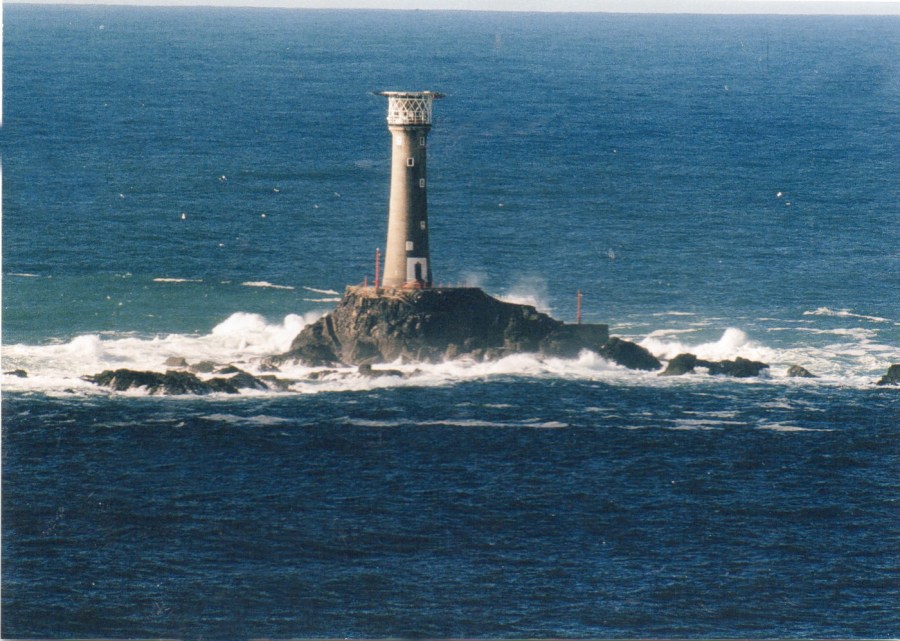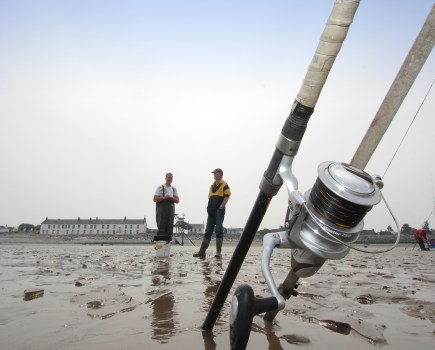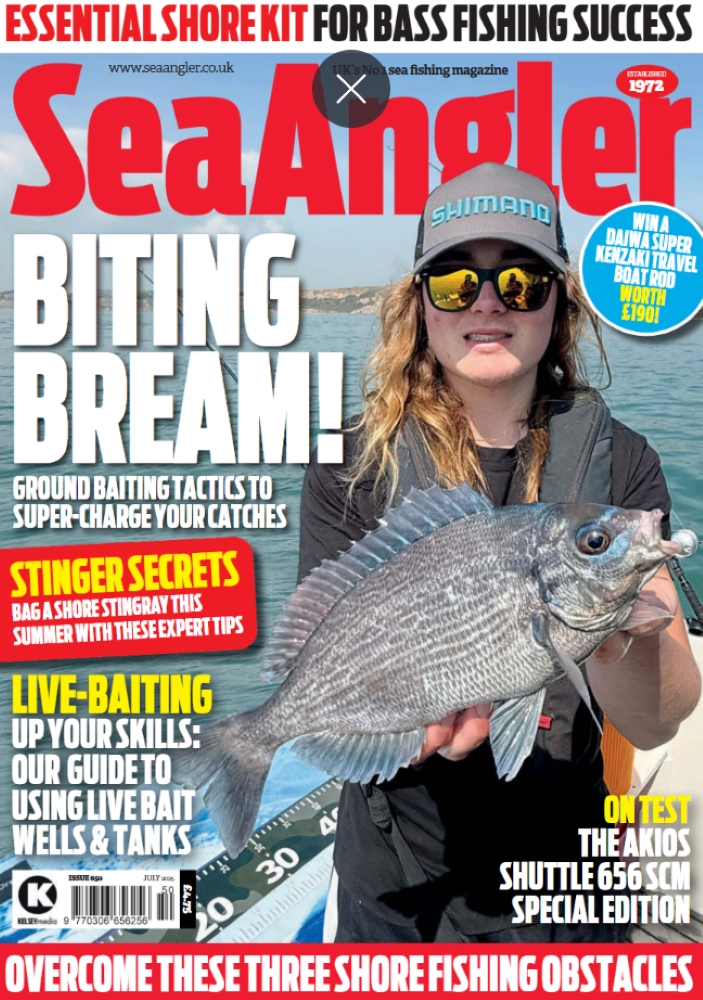Mike Millman goes back in time to recall catches that formed the foundation of Cornish sea angling history
The year is 1921 at the Carnbase Reef, a short distance from the vaulting cliffs of Land’s End and the Longships Reef, on which in 1875 the 115ft tall lighthouse was built. The anglers were Captain Hugo Millais and his wife who over two evenings had a dramatic experience with pollack and coalfish that is unlikely to be repeated.
They left Sennen Cove in the late afternoon reaching the reef of which their boatman John Roberts, a commercial fishermen, had great knowledge, an hour later. The sea surface was being churned to white froth by predators feeding on a huge shoal of herring and in a matter of two hours of whiffing with 6oz leads, the boat moving at 3½ knots, they caught 24 coalfish and pollack together weighing 269lb. The top fish was a pollack of 21lb taken by the good Captain, this being a new record for the British Sea Anglers’ Society of which he was a member.
The next afternoon, in a continuing calm sea – unusual for the Land’s End area, it being open to the Atlantic Ocean – they made a return journey to the reef and fished from 5 to 9pm catching an amazing 119 pollack and coalfish, many being over 10lb. The Captain had 24 for an aggregate of 416lb and his heaviest coalfish of 23½lb was another record. The catch made by his lady wife included a coalfish of 21lb in a total she shared with the boatman who used a handline. The total weight achieved by the trio was a remarkable 1,403lb. Millais later reported that fish were breaking the surface in every direction in a quarter mile square box.
The following year this incredible catch was fully reported by F. D Holcombe, who was secretary of the BSAS, in his much-acclaimed book “Modern Sea Angling” in which many of the chapters had appeared during the previous four years as articles in the Fishing Gazette, which remained in print until the 1960s. The Millais pollack remained the record until 1955, its replacement being a fish of 22½lb caught off Fowey. Two short years later a specimen of 23½lb broke the record again with a fish off Newquay.
RED BREAM – DODMAN POINT
In 1925 Arthur Bell, who was secretary of the National Federation of Sea Anglers, laid claim to a record for the red bream with a fish of 7½lb. It would remain until 1974 when, in roughly the same area, Brian Reynolds fishing from the Mevagissey-based Osprey, owned and skippered by George Pearce, took an incredible specimen of 9lb 8oz 12dr.
Back in Mevagissey George rang to say that Reynolds and the fish were on their way to me in Plymouth, and just over an hour-and-a-half later he was on the doorstep with a fish box covered by a cloth. When he whipped it off I couldn’t believe my eyes for there was this almighty red bream that remains a record not remotely approached since that memorable day 48 years ago. Reynolds told me his tackle was specifically for bream and on such light gear the advantages lay with the fish. He recalled the rod bucking violently as the fish ‘bounced’, a characteristic feature of both the red and black bream. Its surface display was spectacular and it was worked to the net several times only to dash off at high speed. The hook was in the corner of its mouth this giving cause for anxiety as they were afraid the hole could enlarge allowing the fine wire 2/0 Aberdeen hook to fall free, but after a final flurry the fish was over the net rim. Two hours later it was weighed on the quay at Mevagissey where holidaymakers had gathered to watch the ritual.
The next morning we drove to the Marine Biological Association where it was positively identified as a true red bream by Tony Mattacola, a Higher Scientific Officer who served the British Record Rod Caught Fish Committee for many years.
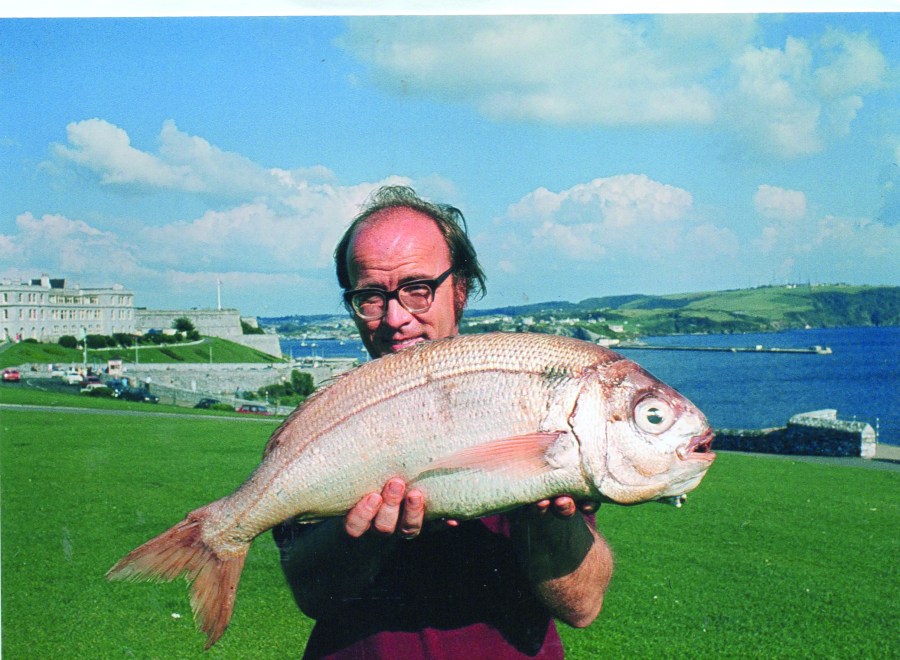
FOWEY FLOUNDER, 1956
Bude’s Arthur Cobbledick and his young son Peter often made the journey to Fowey where they fished for flounder from a boat hired at Golant. It was a memorable early winter day that Arthur took his record flounder of 5lb 11ozs 8dr. Fortunately, it was a Saturday and Percy Varcoe’s freshwater fish shop was open and the fish was taken there and weighed on the shop’s accredited scales. The fish would become the British Record that still stands today. The stretch of the river upstream of the china clay loading jetties, a mile or so beyond Golant, had produced big flounder for many years but none to exceed 5lb. Flounder are now struggling to reach heavier than 3lb and Arthur’s record of 66 years is likely to make a century.
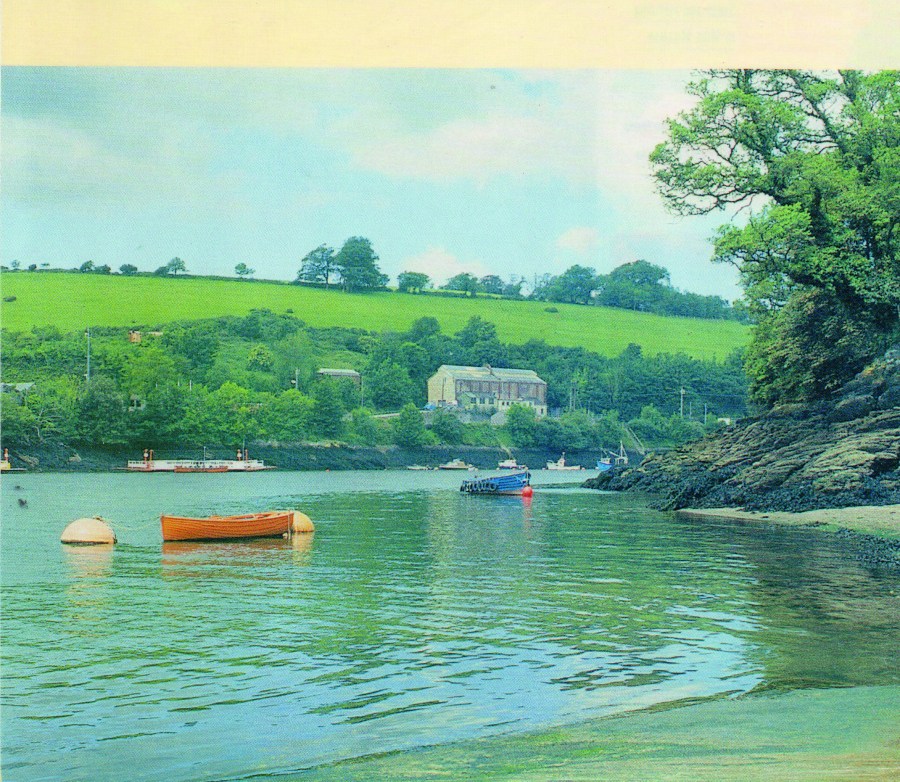
The stretch of the Fowey between the fishing village of Golant and the china clay jetties where Cobbledick took his 5lb 11oz 8dr flounder, now one of the longest held records in British angling history.
MAKOS
The Shark Angling Club of Great Britain was formed in 1953 and within seven years its active membership was 829. Thousands of blue shark were brought ashore and weighed before throngs of excited holidaymakers and the arrival of the loaded tumbrel was a highlight – conservation ideals were a very long way in the future.
In the summer of 1955 a shark, at first thought to be a record porbeagle, weighing 352lb was taken by Hetty Eathorne off Looe from her own boat appropriately named “The Little One” in respect of her diminutive stature.
On examination of the photographs sent with a World Record Claim form to the International Game Fish Association it proved to be a mako shark and so became the first British Record for the species. Hetty employed her own boatman, a professional fisherman called Bill Butters, with whom she enjoyed much success.
The 1960s was a Mako decade and at least five caught from Looe and Falmouth boats weighed heavier than 425lb. In 1966 Ken Burgess became the record holder with a fish of 498½lb caught a mere 12 miles south of Looe from Ray Pengelly’s Irene.
It was not until 1971 Joyce Yallop, who was fishing close to the Eddystone from Alan Dingles’ “Lady Betty” out of Looe, took the record away from Burgess by a mere 1½lb. When gutted the next day it was found to contain a large conger eaten no more than a couple of hours before its capture.
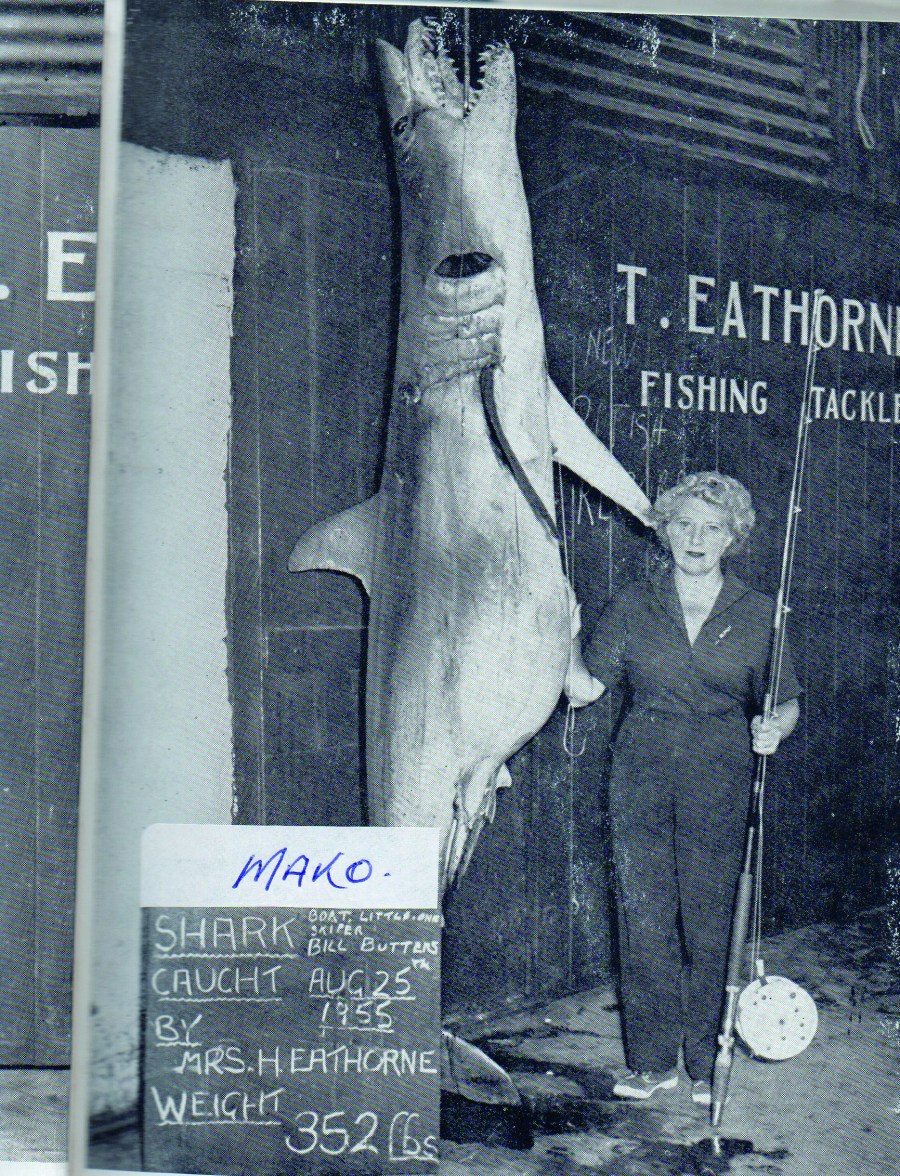
Hetty Eathorne with British waters first Mako Shark of 352lb
TURBOT – A MANACLES REEF TRIO – 1964
The infamous Manacles Reef has produced many a good catch over the years but in 1964 three turbot caught by the same angler within a matter of hours was unprecedented. Marmian Garnsey, who was on holiday in the Falmouth area, had taken a boat trip aboard the Falmouth based “Acacia”. The skipper opted to cross the bay to the extensive reef and drift one of the main gullies in deep water. With high outcrops of rock and with a sandy bottom between, this was typical turbot ground. Back in Falmouth the fish were weighed on Custom House Quay and recorded at 29lb, 18½lb and 14½lb. The largest, successfully claimed as a new British Record, was the last from open ground until the wreck era was in full swing and fishing the side of wrecks became the vogue and highly productive (attempts to find a picture of Garnsey and his turbot have so far not been successful – maybe this article will jog a memory and produce one).
0PAH – 1973 – MOUNTS BAY
In 1973 Tony Blewett had the unexpected catch of a 128lb opah, a member of the Sunfish family, in Mounts Bay which fronts the Penzance shoreline, setting a record that should never be beaten. Tony told me not long after the capture was made that he always regretted not returning the fish but times and thinking were very different half a century ago. Is it not high time for the British Record Fish Committee to exclude the opah and sunfish records from today’s list other than as retired species?
Part 2 coming soon!

